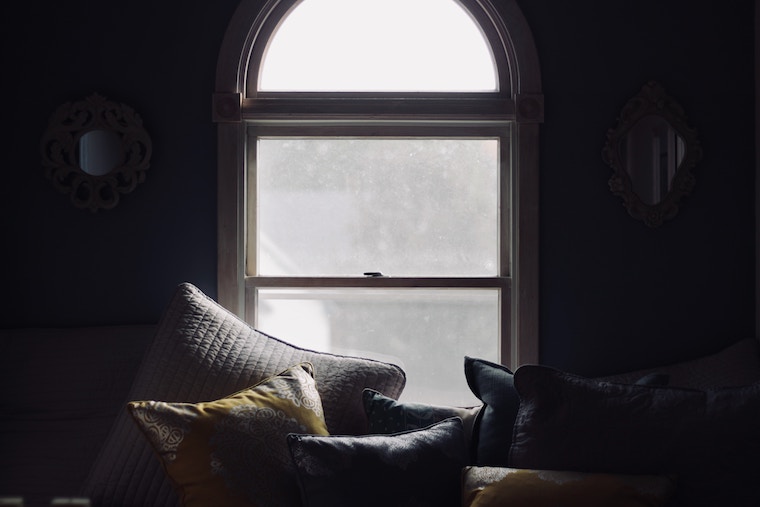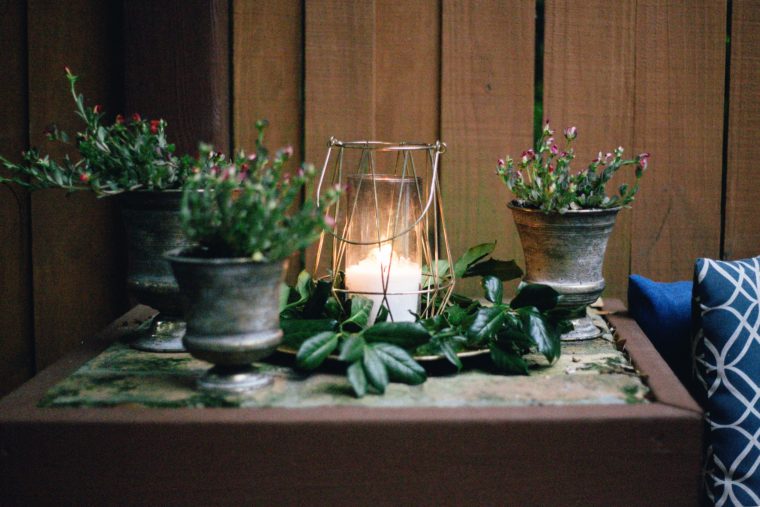Khajak Keledjian, founder and CEO of Inscape, a meditation studio (and app!) in New York City reinforces that taking time out of your day to collect your thoughts can pay off in a big way. “Meditation benefits include reduced anxiety, greater creativity, and expanded emotional intelligence,” he says. But nothing kills your zen like Friends reruns blaring in the background or closing your eyes, only to picture the heaps of clothes that need to be washed.
The solution? Create a zen den or a dedicated meditation space where you can go to look inward and block out all the distractions from the day (see ya in 30, heaps of laundry!). “Setting a consistent space to meditate will help, because you'll become accustomed to the sounds, scents, and environment,” says Keledjian.
In other words, entering the same space, created specifically for meditation, in many ways cues your brain that it's time to go inward and honor yourself—which can actually make the process a heck of a lot easier (and more productive). Leura Fine, the founder and CEO of online interior-design concierge Laurel & Wolf, stresses the importance of putting thought into your surroundings. “Colors, temperatures, textures, and the way a space is arranged can change your experience,” she says. “You want to make sure that your environment is set up with intention.”

{{post.sponsorText}}
Here, six ways to get a zen zone, according to the pros.

Find the zen zone
Determine where you want to establish your at-home sanctuary. If you live in a tiny efficiency, don’t panic: You don’t need a lot of space—just a private, comfortable area you can retreat to. “Think about your favorite spot in your home where you feel safe, cocooned away. Maybe it’s a little nook,” says Keledjian. “If there’s a spot you’re already drawn to, that’s a great place to meditate.”

Minimize distractions
“The average person has 35 to 48 thoughts per minute—so it’s natural to get distracted,” Keledjian says. So do what you can to eliminate opportunities for your mind to wander. Turn off the television—or if possible, remove it from the space entirely—and set down your smartphone. Decluttering also helps you focus. “A clean room means a clean mind!” says Fine. “Get organized with boxes, bins, baskets, or pieces of furniture with storage.”

Surround yourself with plants
“Bringing the outside in is always a great way to create a relaxing environment in spaces large and small,” says Fine. “Indoor plants literally help you breathe better, as they can remove air toxins and increase oxygen levels in a space.” Don't have a green thumb? Fake it with an ultra-low maintenance succulent or two.

Get cozy
Meditation cushions are designed to alleviate pressure on certain parts of the body, but by no means are they a requirement. “When I started, I sat on a stack of magazines,” says Keledjian. “Find a position that works with you and explore from there." The key is to find a set-up that’s comfortable and allows for a straight spine. “It’s challenging to stay present if your leg is tingling or your back is uncomfortable,” he says.

Create an earthy vibe
Whether you prefer candles, incense, or diffusers, scent is a powerful stimulator that can calm or invigorate. Fine prefers candles because they are as attractive as they are nice to smell (here are some to get you started). “Choose one that isn't overwhelming but instead simply creates a pleasant aroma that can fall into the background,” she says. “I love wood scents because it feels like I'm in nature even if I'm inside.”
Inscape’s signature blend contains frankincense, which according to Keledjian, can help to promote feelings of inspiration and acceptance, as well as vetiver, which he says is good for grounding and calming, and heartwarming cardamom. Best yet? The scent comes in a rollerball, so you can take it from the studio to your home, rolling it over pulse points when you need to de-stress prior to meditation.

Don't get distracted by the noise
According to Keledjian, soothing sounds cane help set the tone for a nice meditation. For their own in-house audio, Inscape’s Keledjian utilized auditory experts to create a soundtrack designed to soothe the mind. “We chose not to use nature sounds, because if you hear a bird, you can become distracted picturing a bird,” he says. “We favor a neutral track that doesn’t prompt particular thoughts.” At home, search Spotify or YouTube for white noise—or similarly comforting soundscapes that appeal to you.
If you want to get this show on the road, check out how to be mindful while walking and if meditation just doesn't do it for you, you're not alone.
Loading More Posts...